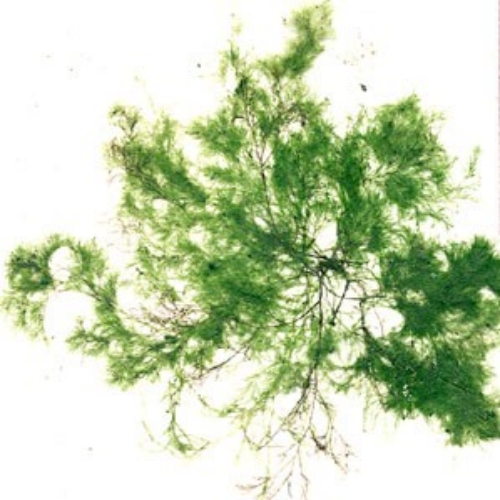
Main Page | References
Cladophora vagabunda (L.) Hoek

Cladophora vagabunda (L.) Hoek
Description: Plants filamentous, silky, soft, pompon-like, to 4 cm diam in wave-washed rocky shores or tufts to 30 cm high in protected habitats, pale green to grass green. Branching pseudodichotomous below, somewhat unilateral above, angles 25°-45° in straight branches, 45°-60° in curved branches; number of branches at joints one to four, rarely five. Cell division intercalary, not apical. Cells cylindrical, 80-140 um diam., 4-12 diam. long. Branchlets tapering to 40 um diam., slightly constricted at junction with main axes. Apices straight above, curved or sickle-shaped below. Apical cells 20-60 um diam., 5-11 diam.long. Rhizoids fine, often connecting to adjacent filaments by hapteroid-like rhizoids.Introduction and Origin: Native to Hawaii.
Hawaiian Distribution: Maui, Kauai, Oahu, Hawaii
Habitat: Near the line of low tide to 2 m deep. On hard substrates, or epiphytic on other algae.
Environmental Effects: Not studied. May affect recruitment of other species by successfully competing for substrate.
World Distribution: Hawaiian islands, the Caribbean
Commercial Interests: None.
Rate of Spread / Method: Very high growth rates. Dispersal by fragmentation and vegetative growth (filaments have diffuse growth), motile gametes, and zoospores.
Factors likely to influence Spread and Distribution: Irradiance, temperature, high nutrients availability.
Reasons for Success: Rapid growth rate, high nutrients availability. Low surface to volume ratio ensures fast nutrient uptake. Diffuse growth of filaments facilitates vegetative propagation through fragmentation.
Control Methods: None used.
References: